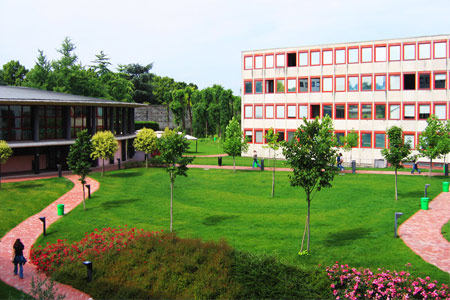Learning outcomes
Truth and representation: multiperspectivism and subjectivity in English Renaissance literature.
Aim of the course: The course aims at developing the students’ competence in English Renaissance culture and literature through a specific inquiry into theatrical, lyrical and, especially, linguistic forms of cultural conflicts. To this end, and in order to improve the students’ critical and meta-linguistic expertise, discussion of topics in English is required.
The notion of reality and its representation in late 16th and early 17th century England gradually changes into a modern relativistic one, focusing on the role of the subject in perceiving both the world and the self, and, accordingly, on his/her passions. On the other hand, a new way of conceiving the real, affected by the current scientific and geographic discoveries, modifies the `world picture’ and unveils a new (dis-)order, which causes the artists to respond with both amazement and bewilderment. This cultural change is widely testified to by Elizabethan dramaturgy. Shakespeare especially subtly develops the (counter-)discourse of a newly emergent subjectivity. And he does so through a rich rhetoric of inelocutio centring on elaborate forms of indirections that give shape to linguistic paradigms of subjective relativism – anamorphism included. One of these paradigms will be analysed during the course. It concerns the notion of `the nothing’ as a subversive concept emerging against a backdrop of socio-cultural definitions of non-being conceived of as ontological nothingness. Both semiological and ontological problems are evidently involved in the linguistic and discursive clash between a dominant and a marginalized, eccentric, yet gradually establishing itself, world-view. Other examples of this paradigm will be taken from John Donne’s poetry, while a theoretical background concerning Renaissance conventional modes of representation will be summarily sketched.
Bibliography:
1) Texts:
• W. Shakespeare, Riccardo II, a cura di A. Cozza, Milano, Garzanti, 1995 (parallel text; students are free to choose an alternative English edition);
• W. Shakespeare, Othello, ed. by E.A.J. Honigmann, London, Arden, 2004;
• W. Shakespeare, Macbeth, a cura di Alessandro Serpieri, Firenze, Giunti, 1996 or 2004;
• W. Shakespeare, The Winter’s Tale, ed. by Stephen Orgel, Oxford, Oxford University Press, 1996;
• John Donne, Poesie, a cura di A. Serpieri e S. Bigliazzi, Milano, BUR 2007;
• During classes students will be provided with integrative handouts.
2) References:
• S. Bigliazzi, Nel prisma del nulla. L’esperienza del non-essere nella drammaturgia shakespeariana, Napoli, Liguori, 2005, pp. 1-88 (introduzione e capp. 1-4);
• L. Innocenti, “Iconoclasm and iconicity in seventeenth-century English poetry”, in The motivated sign, ed. by O. Fischer and Max Nänny, Amsterdam /Philadelphia, John Benjamins, 2001, pp. 211-17;
• Jurgis Baltrušaitis, Anamorfosi, Milano, Adelphi, [1978] 20043, pp. 17-49.







